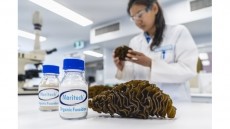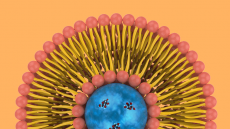Vitamin E - the need for perspective
vitamin E are causing confusion amongst consumers, even though they
are open to debate from fellow scientists and members of the
supplements industry.
A recent study reported an in vitro study on the toxicity of a vitamin E metabolite, gamma-tocopherol quinone, for mice brain cells.
This study was reported on by NutraIngredients.com in an article which stressed that mouse and human cells naturally contain different quantities of the vitamin precursors. It is pointed out that it is highly debatable whether the toxic metabolite is even found in measurable amounts in humans.
However in a follow-up interview, lead researchers Dr David Cornwell and Dr Jiyan Ma from Ohio State University said that in a communication on the results issued by the university they "were not as clear as they might have been".
Cornwell stressed: "Gamma-tocopherol itself does not have a damaging effect on cells.
"The arylating quinone metabolite of gamma tocopherol does and it is possible, in our minds, that the metabolism of gamma-tocopherol to its quinone is the proximate cause of many of the extraordinary effects of gamma tocopherol," said Cornwell.
There are eight forms of vitamin E: four tocopherols (alpha, beta, gamma, delta) and four tocotrienols (alpha, beta, gamma, delta). Alpha-tocopherol (alpha-Toc) is the main source found in supplements and in the European diet, while gamma-tocopherol (gamma-Toc) is the most common form in the American diet.
Gamma-Toc is consumed from vegetable oils such as corn and soybean, and also from nuts. Sources of alpha-Toc include olive oil and sunflower seeds.
While the majority of research on vitamin E has focused on alpha-Toc, numerous reports have reported that gamma-Toc offers different benefits. For example, gamma-Toc was superior to alpha-Toc for removing species like reactive nitrogen oxides that cause cell damage.
"It is important, therefore, that gamma-Toc is better than other lipid-soluble antioxidants in preventing nitrogen dioxide-mediated DNA strand breaks," wrote William Stone and Andreas Papas in the Journal of the National Cancer Institute (1997, Vol. 89, pp. 1006-1014).
Increased levels of gamma-Toc in faeces have also been linked to the elimination of faecel mutagens and a reduced risk of colon cancer (Journal of National Cancer Institute 1997 Vol. 89, pp. 1006-1014).
While the data from the in vitro study clearly show that the gamma-tocopherol quinone is toxic to the mice brain cells, the implications for humans were not explored, and the study failed to consider several key points.
Firstly, the human body naturally converts over half of ingested gamma-tocopherol to a different metabolite called 2,7,8-(beta-carboxylethyl)-6-hydroxychroman (gamma-CEHC) and then excretes the product in the urine and feces.
It is therefore questionable if toxic quantities of the quinone metabolite would actually be found in the human body.
Secondly, vitamin E intake will inevitably contain several, if not all, of the tocopherol and tocotrienols forms.
It has been reported that mixed tocopherol preparations have greater antioxidant and anti-inflammatory effects than the alpha-form on its own (Nutrition Research, 2005, Vol. 25, pp. 877-889).
It has also been shown that CEHC, arguably the main metabolite of gamma-Toc, has natriuretic factors which promote sodium excretion, which is linked to lowering blood pressure and improving heart health.
Now Food's Neil Levin, CCN, DANLA, agreed that the conclusions from this study, while valid in the specific case studied, could not be extended to the real world.
In his response to the study, Levin wrote: "Since this brain cell damaging effect has not previously been noted in the clinical literature, it is not likely to be a real life concern.
This study starts out on the wrong path by assuming that the preferential transport mechanism for alpha tocopherol means that gamma tocopherol may be harmful to the body. It then compounds the error by injecting a metabolite form of gamma tocopherol - that admittedly may not even exist in the body in significant quantities - into cells in a test tube setting.
It would be unfortunate if this study generates headlines that falsely imply that harm from consuming gamma tocopherol - from foods or dietary supplements - has been demonstrated in this totally artificial scenario.
This study only shows that isolated metabolites introduced into brain cells in a test tube may cause cell damage, not that any of this actually occurs in living beings. "












